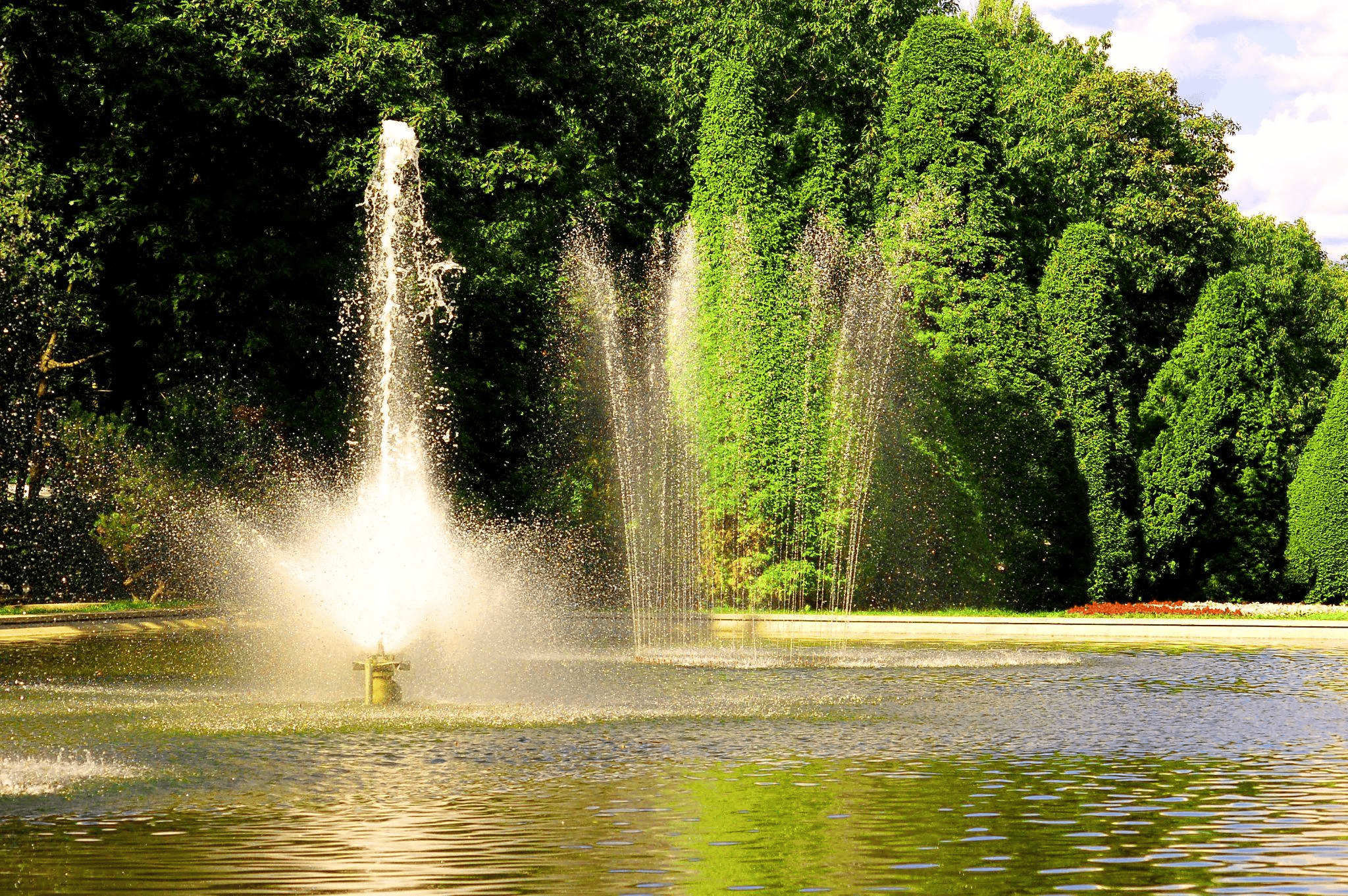Since putting in a pond pump is so important, it’s usually one of the first things you do when building a pond.
Pumps for fountains might not be pretty, but they are essential to the pond’s ecosystem and usually they are submersed in the water so you don’t see them anyway. You’ll get the same answer if you talk to people or read books about ponds. For a pond to stay healthy, it needs a pond pump.
What Do Pond Pumps for Fountains Do?
A pond is a water body that doesn’t have a current, except for what is supplied by wind, or any other way for water to move. When the water becomes stagnant, your fish and other animals in the pond could die from a lack of oxygen and a color change of the water.
Stagnation and stratification can be fixed with pumps for fountains. Oxygen is added to the water and the fountains move the water around in the pond, agitating the surface and mixing the layers of water beneath the surface. In small pond, filtered-water pumps and pumps that bring water to water features can help clean and oxygenate the water.
All these things work together to stop algae from growing, give the fish the oxygen they need, and keep the water in the pond clean.
Which Pond Pump Model Do You Require?
The best pond pump for you will depend on how big your pond is and what you want to do with it. But pond filtration pumps and fountain pumps are usually the ones that are suggested the most. Some pumps can do more than one thing.
Filter Pump for Ponds
A pond filter pump’s job is to move dirty water from the pond through the filter and back into the pond. It’s an easy way to keep your pond clean that you can count on. But this method is usually used only for small ponds. Larger ponds do not typically have biofilters. The pond is benefitted instead by the constant churning of water and increased oxygen levels in the pond.
Fountain pump
A fountain pump, like its namesake, is made to power a fountain or similar water feature. This water feature is not only pretty, but it also does something useful: it adds oxygen to the water.
Filter and Fountain Pump in One
Some pumps for small fountains can be used to run both the filtration system and the water feature. This will clean the water and add oxygen to it simultaneously. Larger ponds, on the other hand, require large pumps and normally do not have a filter other than one keeping debris out of the pump’s intake.
How Big of a Pump Do You Need For Your Pond?
The next most important thing is to figure out what size pond pump you need. You need one that can handle the water in your pond but won’t break the bank.
There are numerous things to think about when choosing the right size of a pond pump, but the volume of water is easy to figure out: multiply the length and width and average depth of the pond (length x width x depth). Then multiply that amount x 6.25. Thus, for example:
20 x 15 x 3 = 900 A pond 20’ long, 15’ wide, and 3’ average depth
X 6.25=562.5 gallons of water in pond
So for a pond with fish to circulate the water once an hour you would need a pump of 562.5 gallons her hour. But remember, the output of a pump is restricted by a nozzle, if you use one, and by the piping from the pump to the water feature. Make sure you use pipe sufficiently large enough to handle the flow of water.
For calculating the gallons in a pond that is large, we recommend you use our pond size calculator
For ponds that have an average depth of less than 7 feet, you only need to know length x width for large fountains. Kasco Marine recommends that a decorative fountain be sized at 2HP pump for every one surface acre. And that is Kasco, which prides itself in aeration capabilities. For other brands, you might have to double that horsepower to aerate an acre.
For ponds that have an average depth of more than 7 feet, you need a bottom aeration—diffuser aeration—system, and you will need to calculate acre feet. You can also make this calculation using our calculator above.
Where in the Pond Should You Attach the Pump?
Most experts say to put the pump in the deepest part of the pond. The cable drops from the pump to the bottom of the pond and then back up the bank to connect to an outlet. The longer the run of the cable, the thicker the gauge will need to be.
Conclusion
Not all fountain pumps need water to work. Instead, they can be put on the side of your pond or inside the water feature. Please read the description of the product carefully before you buy it. Visit https://www.fountaintechpumps.com/ for more information.
Featured Images Source: Image by bedneyimages on Freepik https://www.freepik.com/free-photo/nice-fountain-with-leafy-trees-background_945125.htm#query=pond%20pumps%20for%20fountain&position=16&from_view=search&track=ais


